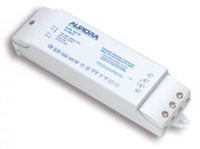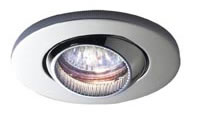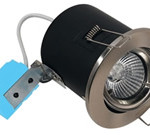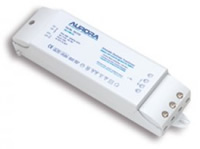
 Is low voltage the same as low energy?
Is low voltage the same as low energy?
No! It’s the watts that count, not the volts.
There is a common misconception that low voltage lighting systems are the same thing in terms of energy efficiency as low energy lighting systems. On this page we will try to explain why this is.
Measuring energy
Energy is measured in watts – your electricity bill probably shows how many kilowatts you have used. A kilowatt is 1000 watts.
Therefore, if you can produce a lot of light while using a small amount of watts you have a low energy light, and a cheaper electricity bill.
You probably know that low energy light bulbs have a small wattage rating and are often compared to an equivalent wattage. You might see that an 11w low energy bulb is the equivalent of a 60w normal bulb. This is only comparing the amount of light that is produced, it has nothing to do with the amount of energy consumed.
Volts, amps and watts

To show that a low voltage light is not a low energy light, we will compare these three lights:
All three examples will produce about the same amount of light, but only one will cost less to run.
You might remember from your school days that watts = volts x amps. Once we know this we can easily show that the maths confirms the number of watts used by each of the three example light:
| Volts(The electric supplyconnected to the light) | Amps(watts dividedby volts) | Watts(as described bythe product) | |
| 50w low voltage spot light | 12 | 4.17 | 50 |
| 50w mains voltage spot light | 240 | 0.21 | 50 |
| 9w low energy spot light | 240 | 0.03 | 9 |
As you can see – the 240v 50w bulb uses exactly the same amount of watts (power) as the 12v 50w bulb.
But doesn’t it use less power because it’s running at 12 volts?
No – watts are watts. It doesn’t matter what the voltage is. We can show this more clearly by explaining about transformers:
 Transformers
Transformers
Low energy lighting such as the 9w bulb in our example will generally run at the full mains voltage, without requiring any change in the voltage.
Most low voltage lighting runs at 12 volts so unless you’re running it from a battery (e.g in your car) there has to be a transformer to reduce the mains electricity supply from 230 volts to 12 volts. Some light fittings have a transformer built into them, and sometimes a separate transformer is required.
Transforming volts and amps
When a transformer transforms a voltage it also transforms the available amount of amps – In the table above you can see that the 12v light uses a lot more amps then the mains voltage lights.
The available amps are transformed by the same ratio as volts but in the opposite direction, so if the voltage is reduced by 20 times (240v to 12v) the amps are increased by 20 times (0.21 to 4.2).
In our above example the voltage has been reduced by 20 times, so the amps have increased by 20 times, but the wattage is the same.
Additionally because the transformer efficiency will not be 100% (some energy is lost in the transformation) the 12v bulb might even more use more power than the 240v one, as the transformer will be ‘using’ some as well as the light.
is voltage the same as low energy? No – it’s the watts that count, not the volts.
Make sure you have a low wattage lighting system to make sure you’re saving your wallet and the environment by using low energy lighting.
We employ reliable professionals who are trained to deal with all aspects of electrical faults. AA Electrical Services is a reputable installation, repair and maintenance service company covering the South East area. Our team of electricians provides you with maintenance of your electrical installation and appliances as well as a fast and reliable breakdown service. Recognising current British standards, our electrical engineers are NICEIC registered, Part P accredited and qualified to 17th edition standard, as certified by the Institute of Electrical Engineers (IEE). This enables us to offer the highest levels of professional service to you.